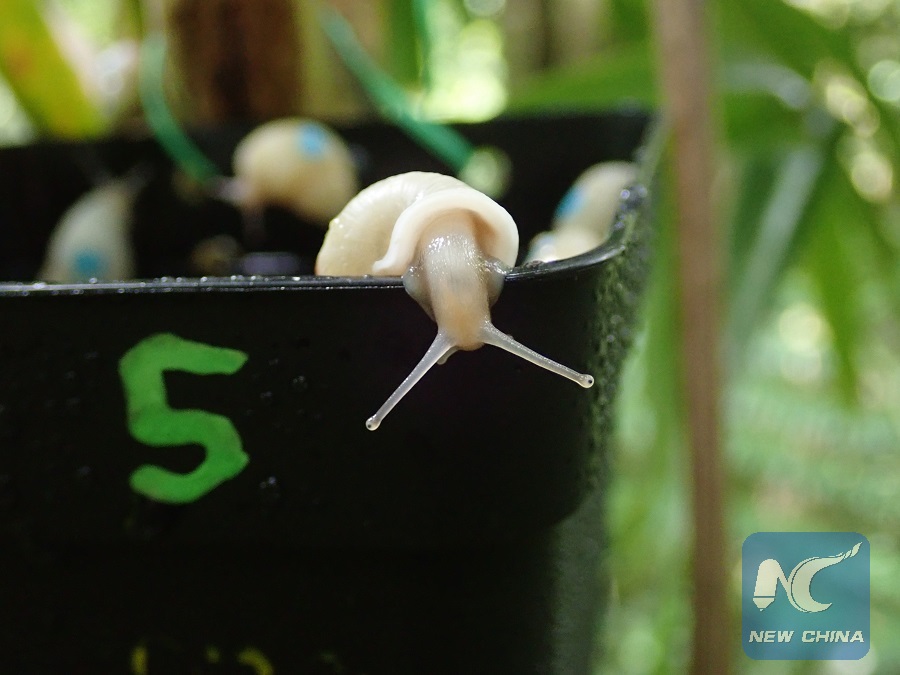
The picture showed endangered tree snails back to their former home in the South Pacific. (Photo courtesy of the Zoological Society of London)
LONDON, Oct. 6 (Xinhua) -- A breeding program coordinated at London Zoo has led to the reintroduction of thousands of tiny endangered tree snails to their former home in the South Pacific -- French Polynesia.
Conservationists were Thursday celebrating the return after 30 years of the snails to the French Polynesia region thanks to a global breeding program coordinated by the Zoological Society of London (ZSL).
The release the snails to the South Pacific region is the result of an international collaborative conservation program between zoos and collections across the world, including Bristol Zoo, Chester Zoo, Marwell Zoo, Royal Zoological Society of Scotland and ZSL London Zoo in Britain.
Following 30 years of joint work at 15 institutions conservationists from ZSL supervised the release of more than 2,000 snails on the islands of Moorea and Tahiti in the Pacific Ocean.
The new arrivals follow hot on the snail trail of a group released in 2016, which the team have confirmed are showing promising signs of becoming established.
ZSL's Curator of Invertebrates Paul Pearce-Kelly, who coordinates the international Partula snail conservation breeding initiative, said: "Though we're still in the early stages of the reintroduction process, which will take several more years to complete, we're very optimistic.
"These tiny snails have proven themselves to be incredibly robust, and have been quickly, in snail terms anyway, dispersing into their naturally high tree habitat following their release.
"These releases have been more than 30 years in the making, and have only been possible with the dedicated efforts of the zoos across the world keeping healthy populations of these species alive."
Pearce-Kelly said conservationists plan to continue monitoring and releasing Partula snails onto the islands in the years to come, and hope that the knowledge gained from the project will help inform conservation and reintroduction efforts for many other species."
A group of snail species specially adapted to live in different volcanic valleys across the archipelago, Partula were nearly wiped out in the 1980s by the rosy wolf snail (Euglandina rosea).
Introduced from Florida in the 1970s to rid the islands of a previously-introduced alien species called the African giant land snail (Lissachatina fulica), the predatory rosy wolf snail instead preferred the tiny natives, driving them to the brink of extinction. Partula snails grow to a maximum size of approximately 2 centimeters and feed on decaying plants.

